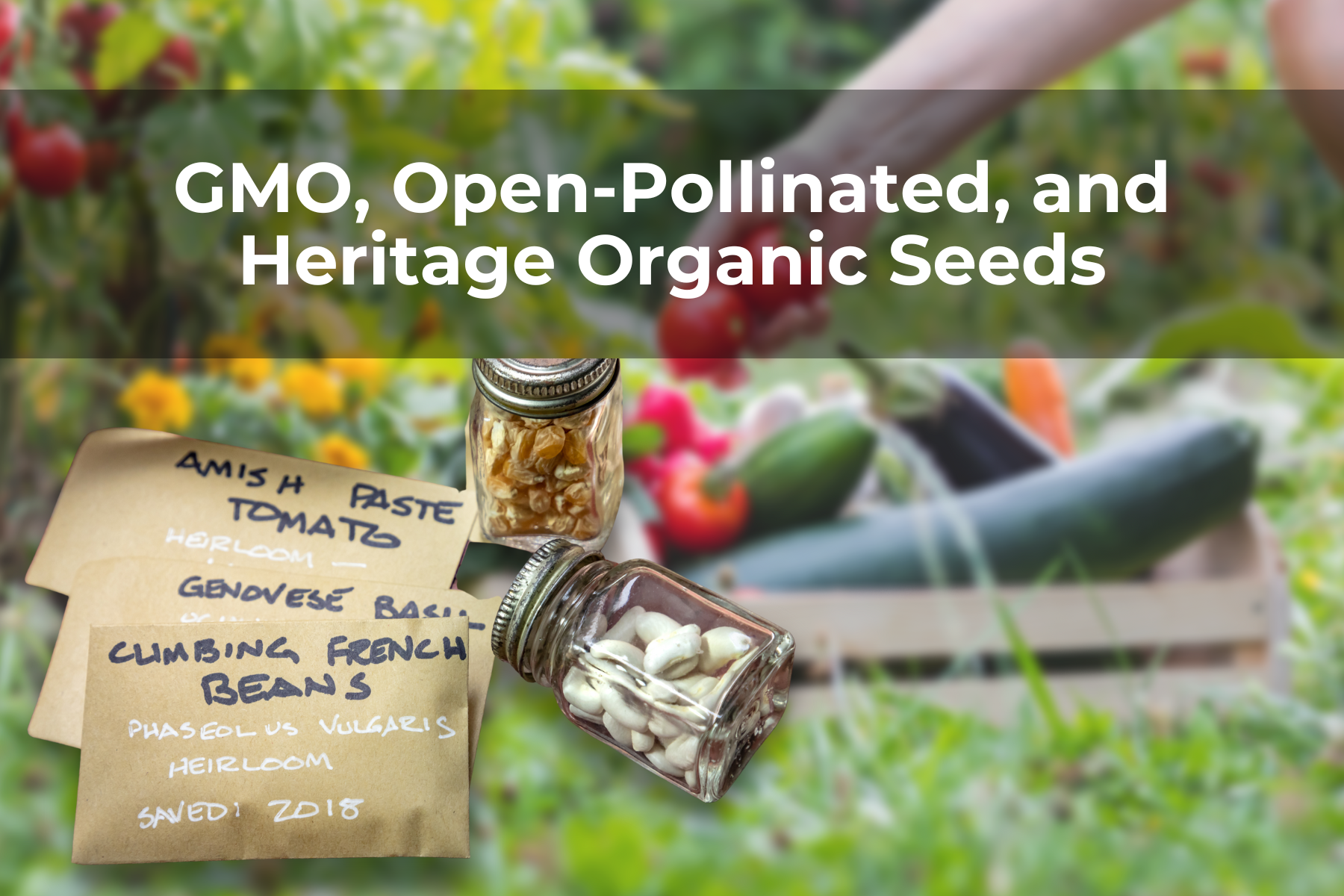Last Updated on October 8, 2022 by Real Men Sow
One of the most interesting and complex topics in organic farming is the differences between organic seeds, open-pollinated seeds, heritage organic seeds, and GMO seeds. The purpose of this post is to help answer some questions about these differences and why they are important to organic gardeners.
Organic Seeds
Organic is a broad term that refers to any seeds that are organic and have did not receive treatment using any non-organic chemical. All of the seeds listed below can be organic, except GMO seeds. However, any of the seeds could not be organic if they were from non-organically produced parent plants.
Open-pollinated
These are the most natural of all seeds. These seeds are from plants that have been pollinated according to nature’s instructions (either by insects or wind or with human help). This is how plants initially thrived at the beginning of time. The result of this process of letting nature do all the work has been a wide range of genetic diversity between plant species.
You may save open-pollinated seeds and replant them next year. They will produce the same kind of plant they came from. They are great for organic gardeners who want to save seeds and don’t have to purchase new seeds yearly.
Heritage Organic Seeds
These are subsets of open-pollinated seeds. All heritage or heirloom seeds can be open-pollinated. However, not all open-pollinated seeds are heritage. Heritage is seeds that have been preserved from certain plants and passed down through generations. These are the best varieties because they are organic and open-pollinated. They have been carefully chosen from the most productive, tasty, and yielding plants by generations after generations of farmers and gardeners. These are the best choices for organic gardening and seed saving.
Hybrid Seeds
They came from two plants from the same parent but come from different species. These hybrids are made by crossing two types of plants to create a new type. Sweet corn, grapefruit (crossing between sweet oranges and pomelo), and Meyer lemons are examples of hybrid plants. You can save seeds from hybrid plants but they won’t grow to the same plant as the one you saved them from. They will either grow to another parent plant or not produce at all. It is best to buy new hybrid seeds every year to know what you are getting.
GMO (Genetically Modified) Seeds
These are the Frankensteins in the garden world. Genetically modified seeds are a new way to hybridize. They not only combine two plant types from the same species but also allow for the creation of completely different species. For example, a tomato might be crossed with fish genes or corn genetically engineered so that it is resistant to certain herbicides.
GMO seeds can also be engineered in a laboratory and are patentable. This makes it difficult to save them (since they are unlikely to produce the same as their parents) and even illegal. Monsanto is a well-known company that genetically modified seeds and sues farmers who save them. GMO seeds are unlikely to be found in home gardens, but it is something you should look out for and avoid.
How to Determine Which Seeds Are Best for Your Home Garden
Many people who grow their food at home choose to cultivate open-pollinated or heirloom varieties of vegetables and flowers in their gardens because these varieties allow them to legally keep and reuse the seeds they’ve produced year after year. It is also highly typical for organic gardeners to purchase their favourite hybrid plant seeds each year for crops like tomatoes. Examples of crops that benefit from this practice include peppers and eggplant. Be sure only to buy seeds from reputable suppliers, and always do your homework before deciding which varieties to plant in your garden.


